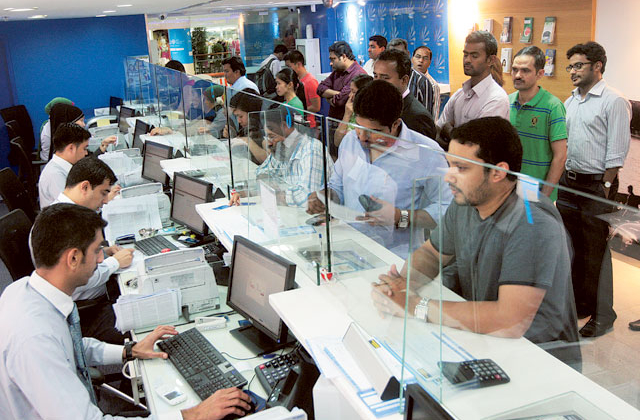Remit fees still takes quite a bite out of your transfers, here’s why and what can be done
It’s often been told that customers should be getting far more transparency on these charges that have constantly taken a share of the hard-earned money one sends back home. But how has this played out and how has the current pandemic scenario impacted these charges?
The market for international payments is ever booming. Every year $10 trillion (Dh36.7 trillion) is sent by people and businesses across borders. Expatriate remittances from the UAE amounted to some Dh165 billion in 2019, according to figures released this year by the UAE Central Bank.
India was the country that received the most earnings made by expats in the UAE, followed by Pakistan, Philippines, Egypt, UK and Bangladesh. While remittance has greatly contributed to faster and more efficient cross-border money transfer, the high costs of remittance services is an issue that many people still struggle with.
Costs high even as volumes rose
Despite this volume, the cost of making these payments remains high. Statistics from World Bank show that the global average cost of sending $200 (Dh735) remains high at 6.8 per cent in the first quarter of 2020, only slightly below the previous year, but way above the targeted 3 per cent set under the UN Sustainable Development Goals.
The World Bank data shows that people are being charged as much as 9.75 per cent to send money from the UAE, with a Dh735 transfer to Sudan costing on average Dh71.66. The cost of transfers to India, the Philippines and Egypt are also on the rise.
One might think that this massive increase in volume either reflects, or promotes, cost-reducing advances in remittance technology. But, despite a massive spike in remittance over the last two decades, costs have trended lower only gradually, and with considerable differences across types of transfer agents and across sender countries.
Remit drop to exasperate charges?
And with remittances globally projected by the World Bank to decline sharply by about 20 per cent in 2020 due to the economic crisis induced by the COVID-19 pandemic and shutdown, analysts view this as a reason to hike up the costs even further, especially as smaller exchange houses struggle to stay afloat.
The projected fall, which would be the sharpest decline in recent history, is largely due to a fall in the wages and employment of migrant workers, who tend to be more vulnerable to loss of employment and wages during an economic crisis in a host country.
Many authorities are also concerned about the high cost of remittances. Sending small sums is often expensive. To promote transparency, some countries limit remittances to bank wires, but banks are the most expensive transfer channel, according to the World Bank.
In comparison, during the first quarter of 2019, banks charged an average of 11 per cent in transfer fees. Post offices charge on average over 7 per cent. The fees can exceed 10 per cent when the destination is in Africa or a Pacific Ocean island.
Cost not an issue in large remittances
Cost is usually not an issue in large remittances (made for the purpose of trade, investment, or aid), because, as a percentage of the principal amount, it tends to be small. But for small, personal transfers, remittance costs are high — “unnecessarily so” even, according to the World Bank report.
Providers of remittance services in the formal sector typically charge a fee of 10 to 15 per cent of the principal amount to handle the small remittances typically made by low-wage migrants.
High fees place a financial burden on the migrant remitters and on the recipients of the remittances, who receive a smaller amount of the much-needed funds sent by their family members and the report had further indicated that it was evident that international banks tend to focus on large-value remittance services rather than on services for migrants.
Finding sustainable solutions to the high cost of remittances is imperative since it is one of the major and most essential external sources of finance for the developing world. There are several measures that can be put in place to help combat the high cost of remittance.
Why remittance cost still on the rise?
What accounts for high transaction costs in the remittance business? Are they related to large sunk costs (money already been spent and which cannot be recovered), regulatory measures that restrict competition, or the lack of access to low-cost public infrastructure (such as payments systems)?
Do exchange controls, country risks, or other specific factors keep the cost of cross-border transfers higher than those of domestic transfers? However, before delving into these it’s worth noting that reports have historically indicated how remittance fees tend to be higher in corridors in which bank concentration is high and competition low.
Before embarking on finding the solutions, it is important to begin by understanding the source of the problem. One of the major causes matter experts cite for the high remittance costs is the rising cost of compliance and the fact that banks, as a strategy of de-risking their operations, are restricting the access of remittance service providers to their bank accounts.
This not only causes delays in the remittance processes but also raises the overall operation cost, ergo, increased remittance charges. Fixing the rising costs of compliance and establishing better banking services for remittance service providers is, therefore, one of the most effective ways of reducing remittance charges.
Reducing the cost of compliance: Compliance is cited by many operators as the number one cause of high remittances. Implementing better compliance programs and using automation can not only drastically reduce the risk of the transaction, but also bring its costs down.
Adopting online money transfers: The high operation costs encountered by remittance service providers is largely responsible for the high cost of these services. In simple words, cash involved in cash-based remittances makes them expensive. To reduce costs, therefore, adopting new cross-border money transfer technologies can be quite efficient.
Over the recent past, considerable success has been made on the online money transfer process. Online money transfer is not only fast and efficient but is also cheaper than the traditional money transfer method i.e. through a remittance service provider.
To fight the high cost of remittance, the senders need to further adapt online money transfer services and its benefits. When an increased number of expats turn to online money transfer platforms, remittance service providers are highly likely to reduce their charges to keep up with the competition, analysts view.
Embracing mobile money: The advent of mobile money technology has completely revolutionised the money transfer platform. Leveraging mobile money to help in the fight against high remittance cost is therefore most likely to contribute to the success of the fight, experts add.
This is considering the fact that mobile money is faster, flexible and a lot more convenient than the services of most remittance service providers. However, the reason why the adaptation of the avenues have slowed are due to risks imposed on by lack of regulation and technical malfunctions hurting the remittance process, but these risks have off late been curbed with regulatory intervention.




